Review: 2013 Lexus LS 460 F-Sport (Video)

While BMW has been turning the 7-Series into a luxuriously silent highway cruiser, Lexus has been busy injecting sport into their isolated lineup. In 2006 we got the 417HP IS-F, in 2011 came the insane LF-A super car, and in 2012 we were introduced to Lexus’ styling and suspension tweak brand F-Sport with the GS350 F-Sport. It was only a matter of time until the spindle grille and the looks-fast F package appeared on Lexus’s flagship LS. Can a “looks-fast” and “handles-better” package help the LS regain the sales crown? Or does Lexus need to go back to the drawing board for some go-fast love?
Exterior
Lexus’s new styling direction has been somewhat controversial, which is probably a first for Lexus having subscribed to the “simple is elegant” mantra since 1989. While I wasn’t sure about the new “spindle” grille on the 2011 GS and I need to see the 2014 IS to figure out if I like it, the spindle on the LS suits me just fine. The problem in my mind is the proportions. The LS’ blunt nose, wide stance and long hood just work while the shorter snout and more pronounced spindle on the IS seem a bit too “try hard” to me at the moment. In addition to the blacked out grill you see above, F-Sport models get a lowered stance, Brembo brakes, revised suspension tuning and unique wheels. The cost for the added kit? $12,080 over the base LS 460’s starting price of $71,990. Out the door at $84,965 the LS 460 F-Sport undercuts a similarly equipped BMW 740i M-Sport by nearly $2,000. Mercedes? The 295HP V6 S400 starts at $92,350. If you thought the LS sells on reliability and value, you’re right.
Interior
Most manufacturers spend the cash on the outside of the “sport” model leaving less of the budget for interior tweaks and so it is with the F-Sport. We get some tweaked seats, aluminum pedals, a black Alcantara headliner and Lexus’ hallmark wood trim has been swapped for aluminum. The rest of the standard LS’ split-level dash remains, dominated by a large 12.3-inch LCD. Befitting a vehicle this expensive, the interior in our tester screamed “attention to detail” with perfect seams, high quality materials and perfect color matching.
That price tag is important to keep in mind. While the LS F-Sport ranges from $84,965 to $88,115, even the “lowly” 740i can be optioned up to $111,295 if you’re not careful. As a result you won’t find some of the expensive options on the BMW like a full-leather dashboard, heads-up display, night vision, or fancy ceramic knobs. Of course, few 7-Series shoppers check those option boxes and the more you add the more there is to go wrong. Lexus’ mantra has long been to keep things as simple as possible by offering high levels of standard equipment, bundling options in packages and steering clear of any gadget or gizmo that could go wrong within a warranty period. Few BMW shoppers load their 7-series to the gills anyway, so 90% of shoppers will find all they seek in the F-Sport’s black-only interior.
The F-Sport’s 16-way power driver’s seat and 12-way passenger’s seat have beefed-up bolstering and embossed logos on the headrests. While I found the seats to be very comfortable for my 6-foot frame, the GS’ 18-way seats offer a wider range of motion and customization. Thanks to the thicker bolstering on the seat back and bottom the F-Sport will hold you in your seat should you decide to drift on your way to the financial district. All F-Sport models come with an F-Sport specific steering wheel based heavily on the standard LS tiller. An electric tilt/telescoping steering column with memory is standard.
Lexus’s flagship sedan is as much about the rear occupants as the front. To that end the F-Sport still has a three-position rear throne with outboard “buckets” and a high-mounted center seat. Thanks to the typical RWD “hump” and the bucket-like design of the outboard seats, the center spot should be left to homunculi. Ditching that 5th person will make the rear more comfortable anyway and four full-sized American adults will have no headroom or legroom issues in even the short wheelbase LS. Befitting the “adult” tastes the LS is designed to appeal to, the rear seat cushions aren’t sitting on the floor providing more thigh support than your average sedan. As you would expect with any vehicle this size, the LS sports a large 18 cubic foot trunk.
Infotainment & Gadgets
Widescreen infotainment systems are all the rage and 2013 the LS up to date with a large 12-inch LCD in the dash. Positioned in its own “pod”, the screen is higher and closer to the normal sight lines of a driver than before. The system ditches the intuitive touchscreen interface Lexus has used for the better part of a decade for the Lexus joystick (it’s officially called Lexus Remote Touch.) I won’t beat around the bush, I hate it. I am however open to suggestion, so please post your thoughts and experiences with Remote Touch in the comment section below.
My issues with LRT are: it occupies a great deal of room on the center console,and it takes far more hand-eye-brain coordination than a touchscreen. Every time I am in a Lexus I find myself glancing at the screen and fiddling with the little control pad far more than when I’m in a competitor’s luxury sedan. This increased distraction hasn’t gone unnoticed by my better half who constantly nags me about keeping my eyes on the road. Want to enter an address using the on-screen QWERTY keyboard? It’s obvious why Lexus won’t let you do that in motion.
To soften the blow Lexus throws in the same media device voice command interface as the other Lexus and premium Toyota products receive. The system is snappy, managed to figure out every command I threw at and has a more natural sounding voice than MyLincoln Touch. Helping counter the nagging Lexus Remote Touch caused (see how that’s not my fault now), the available Mark Levinson sound system can drown out even the most shrill mother-in-laws.
Perhaps reinforcing that Lexus focuses on the “meat” of the luxury segment and not the one-percent, you won’t find the same level of gee-wizardry in the F-Sport as some of the Euro competitors. You won’t find night vision, a full-leather dashboard, expensive ceramic knobs, massaging front seats, heads-up displays or full-LCD instrument clusters in the Lexus showroom. Instead, Lexus doubles down on perfect seams, quiet cabins, a high level of standard equipment and quantities of wood that would make Jaguar blush. New for 2013 is an optional collision prevention system that augments the collision warning system from last year’s model with the ability to fully stop the car while traveling at low speeds to prevent an accident. Much like the system Volvo has been stuffing in their cars since 2009, the system is active from about 5-24 MPH. Lexus has also tweaked their radar-based dynamic cruise control to now take the LS to a complete stop and take off again in stop-and-go traffic.
Drivetrain
The naturally aspirated luxury car V8 is an endangered species now that BMW, Audi and Mercedes are embracing turbo love. Lexus is the lone holdout using the same 4.6L naturally aspirated V8 engine the LS 460 debuted with in 2006.The direct-injection mill produces 386 ponies at 6,400 RPM (dropping to 360 in the AWD model) and 367lb-ft of twist at 4,100. Power delivery is typical of a medium-displacement DOHC V8; there is enough grunt at the low end to chirp the wheels, torque builds in a linear fashion and most of the “go” happens near red-line. The observant will note the F-Sport is down on power when pitted against the latest in German twin-turbo V8s putting the F-sport at a serious disadvantage when stoplight racing. In terms of power, the LS 460 compares most directly to the 740i with BMW’s turbocharged six-cylinder engine. On the bright side, the F-Sport’s engine is incredibly smooth and has one of the best engine sounds on this segment (you can thank the turbos for messing up the German symphony.) Why didn’t Lexus drop the 5.0L V8 from the IS-F into the F-Sport? The world may never now.
For F-Sport duty the LS gets a few software tweaks and performance-themed upgrades. The 8-speed automatic has been reprogrammed to rev-match downshifts, there are some snazzy shift paddles on the steering wheel, and there’s a Torsen limited slip differential out back. F-Sport tuning adds variable gear ratio steering to the electro-mechanical power steering unit and an additional “Sport+” driving mode for the engine, transmission, steering and suspension systems
Drive
The naturally aspirated V8 defines the way the F-Sport at the dragstrip. Because the engine needs to rev to 4,100 RPM for torque to peak, it lacks the immediacy and urgency you feel from the twin-turbo Merc and Bimmer. The 8-speed automatic uses closely spaced low gears to help improve off-the-line performance allowing the F-Sport to hit 60 in 5.47 seconds. That’s a hair slower than the BMW 740i and half a second slower than the 750 or S550. However, if a great soundtrack is more important to you than shove, consider that turbos interfere with classic V8 sounds due to their location in the intake and exhaust plumbing. Further boosting the high-revving V8 howl, Lexus dropped a sound tube into the intake to pipe more “V8” into the cabin.
The mission of sport packages is primarily to improve looks, and secondarily improve handling. That makes Lexus’ decision to put an air-suspension in the F-Sport a bit unusual. You see, there are three basic types of adaptive suspension systems. The first uses a strut filled with a ferromagnetic fluid whose viscosity changed when electricity is applied (GM and Audi like that one). The second is a more typical gas-filled strut with an electronically controlled valve to alter damping characteristics (Volvo, Ford and Chrysler use this one). Last is the air-suspension. Unlike the other two, air systems don’t just alter the damping, they are also involved in maintaining (or altering) the ride height. This means they both damp and keep your car off the ground. By altering the pressure in the internal air bags, ride firmness and height can be adjusted. While air suspensions have a pedigree (everyone from Rolls Royce to Jaguar uses one) having a vehicle ride on four small “Aero Beds” leads to an unusual feel when the road starts to curve. I’m no stranger to this technology, my own Jaguar Super V8 uses a similar system, and it delivers a similar feel. There’s a reason Jaguar ditched the system for their new breed of corner-clawing kitties.
Despite the F-Sport having a lowered ride height over the regular LS and the air suspension being tweaked for a firmer ride, the system is firm but floaty. Sort of like over-inflating that air mattress you pull out for overnight guests. (My Jaguar feels exactly the same and so does the Mercedes S-Class.) That doesn’t mean the F-Sport is a land barge, it just means the feeling is unusual. Feelings aside, the F-Sport handles extremely well thanks to grippy low-profile rubber and Lexus’ variable gear ratio steering system.
VGRS (as Lexus calls it) has a more natural and direct feel than BMW’s active steering system, especially on close-quarter mountain switchbacks where you’re sea-sawing the wheel as you alternate mashing the stop and go pedals. The system fools you into thinking the F-Sport is lighter and more balanced than the BMW when in reality they very similar. At 53:47 (front:rear), the F-Sport is a bit heavier in the nose than the near-prefect 50:50 BMW 740i (but not far off the heavier 750i), but the Lexus hides it well, only giving up the secret when you’ve hit the limit and the nose begins to plow. Compared to the heavier 750i or S550, the LS feels lighter on its feet. Surprised? You shouldn’t be, after all, BMW is the new Meercedes. While I would take the more neutral vehicle, I know a majority of real-world owners prefer a car that leans toward understeer. (Fear not, if your foot is mashing the go pedal, the F-Sport will get all kinds of tail-happy on you.)
Out on the highway or driving through pot-holed downtown streets, the air suspension makes more sense because it soaks up pavement imperfections like a Cadillac Fleetwood, which is after all the raison d’être of the Lexus brand. While I think I would have demanded the engineers swap the airbags for some steel coils, I don’t think that would make the F-Sport sell any better. Without more shove, the F-Sport will never be direct competition for the new breed of German luxury sedan. Instead the F-Sport is quite simply the best looking Lexus to date and the most dynamic large sedan the Japanese have ever built. Is that enough to regain the sales crown? Only time will tell, but the bold grille, F-Sport model and low sticker price sure can’t hurt.
Hit it
- Well priced luxury car without a discount brand cachet.
- Impeccable reliability reputation.
- The F-Sport isn’t as demure as a modern 7-series but not as flashy as a Maserati, etc.
Quit it
- The Lexus joystick device is my least favorite infotainment input device.
- Fewer gadgets and gizmos are available compared to the BMW 7-Series and Audi A8.
Lexus provided the vehicle, insurance and one tank of gas for this review
Specifications as tested
0-30: 2.215 Seconds
0-60: 5.47 Seconds
1/4 Mile: 14.09 Seconds @ 100.4 MPH
Average Fuel Economy: xx MPG over 585 Miles

More by Alex L. Dykes
Latest Car Reviews
Read moreLatest Product Reviews
Read moreRecent Comments
- Tele Vision As a V1 owner I opine that Cadillac should be GM's version of AMG. i.e.: Regular Equinox with an inline 4 or V6; and an Equinox V with a twin-turbo V6; lowered; and appointed with many peeled cows - at twice the price. It'd sell. V all the things!
- Jeff Not really bad just mostly oil changes.
- Jeff Thanks again Corey for this Eldorado series.
- Scott I seriously doubt that they will be in business within three years. They are phasing out popular models and not replacing them. Durango is going to disappear next. They say that the elevators don’t stop on many mid level floors at the Stelantis HQ. They have let many designers and engineers go. Pretty soon the customers will get a clue that they shouldn’t bother stopping at a Stelantis dealership!
- Lou_BC Ford should hire someone who knows how to design an esthetic pickup front end. Ram's about the only one with a decent snout.
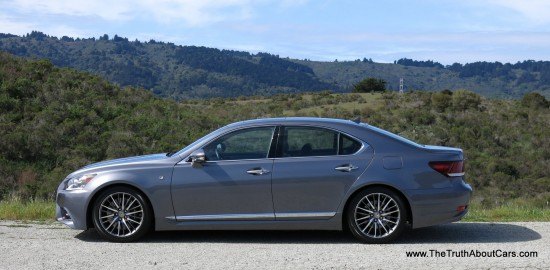































































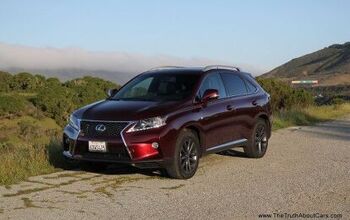
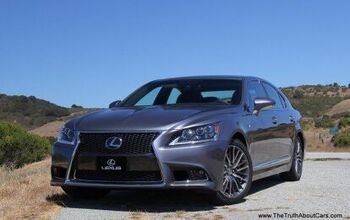
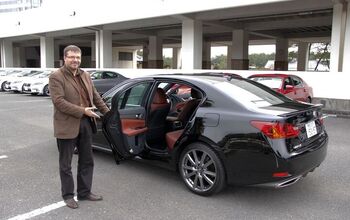
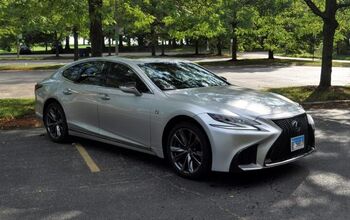
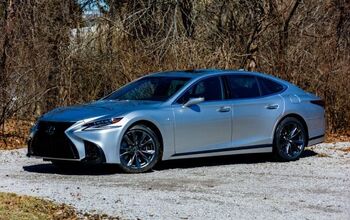










Comments
Join the conversation
"At 53:47 (front:rear), the F-Sport is a bit heavier in the nose than the near-prefect 50:50 BMW 740i" So I know BMW keep claiming 50:50 is near-perfect in their ads, but is it really? If I'm on a track, I think I want more weight over the rear so I can accelerate out of corners earlier. On the street, in a fwd car, more weight over the front axle actually works better. I'm not really sure what the "perfect" weight distribution is for a rwd street car. Perhaps it is also more rear biased for better traction over the driven wheels? Anyway, since you are now quoting BMW marketing I think you owe us a detailed article on the subject with appropriate research including driving in snow, rain, on a track, across a muddy field with and without a body in the trunk, talking to a passenger whilst texting with a phone in your lap.
A car with a 50:50 weight balance is very neutral. Think on it this way: if the car is going 50MPH and you're not braking or accelerating the car's manners tend to be "neutral" showing neither pronounced understeer or oversteer, you know, unless you want either of those two which you cab create with braking, power or steering. While the nose heavier cars tend to understeer a bit more predictably which many people find easier to handle. It's a preference thing. I prefer the more neutral car but I'd rather my spouse or kids were in the car with more of an understeer characteristic.